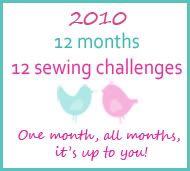I had planned for today's post to just be a round up of useful websites, blog and books that can help you on your way to a simple (or simpler) life, however on Wednesday (perhaps foolishly) I promised to give you some ideas for your harvest so I have split today's Post into two. I will do my best to post the second part this evening but I might not get round to it till tomorrow.
When harvesting you garden you will at times end up with thousands of an item as all your plants bear fruit (or veg) at the same time. I for one am over Pumpkins after about 2 weeks so the need for preserving you harvest comes into play.
Harvest can be preserved a number of ways but the most frequent are:
Cold Storage - This involves placing food in a cool dark environment with varying levels of humidity (some foods need moist, others dry some warmer others cooler) which must be taken into account when deciding where to store food. A root cellar is a good place to start but not very easy to find in most of Australia.
Canning - The principle behind canning is to destroy the microorganisms that cause food to spoil and to create a vacuum in which remaining bacteria cannot grow. Essentially you are pasteurising your food so you need to make sure you get it right.
I have never attempted canning, but my grandmother always used to can fruits and veg.
Drying - This was one of the earliest methods of food preserving where sun was plentiful. It is by far the simplest and most natural way of preserving food and if you are fortunate to live in a warm, dry climate all you needs is fresh food and a little time, for the rest of us a dehydrator or an oven is all that is required.
FRUIT LEATHER RECIPE
Freezing - Although freezing does not stop the clock, cold temperatures considerably slow the deterioration of food and postpone spoilage by temporarily stopping the growth of organisms. While the initial outlay for a good freezer and the electricity to run it can be expensive it is superior to other preserving methods. More nutrients are preserved and texture, colour and flavour are better than other methods.
TIP: Always remember to label your items well and create an inventory and/or a map of your freezer so you (or the man of the house) can always find what you are looking for quickly and easily.
TIP: Freeze citrus juice in ice cube bags and use the juice to flavour dishes throughout the year.
Jams and Jellies - It is never too early or too late to learn the art of jam and jelly (Jellies have no chunks of fruit in them) making. You can create a seasonal ritual by going to a pick your own and then letting the kids help you to make the jam and then enjoy it throughout the winter. The basic recipe is simple and contains Sugar, Fruit and Pectin in varying amounts, for example raspberries will need more added pectin that blackberries in order to set.
HOT PEPPER JELLY RECIPE
CINNAMON PEACH JAM
Pickles, Relishes and Chutneys - These wonderful meal accessories add interest to a main course. They are far from nutritious on their own but make nutritious food much more delicious to eat.
MUSTARD PICKLE RECIPE
If you do not have a garden yet want to try any of the above methods buy your food stuffs in bulk when in season. Lemons can be bought cheaply when in season or ask around odds are you will know someone with a lemon tree who is desperate to off load some.
Gosh this has turned into quite a long post so I hope you all get something from it. The recipes I have linked to I have not tried (yet) but they are on my to list for the right time of year.
Have you liked the series of posts? Would you like to see another one next week?
Brand Ambassador Intro - Becky Jorgensen
10 months ago









No comments:
Post a Comment